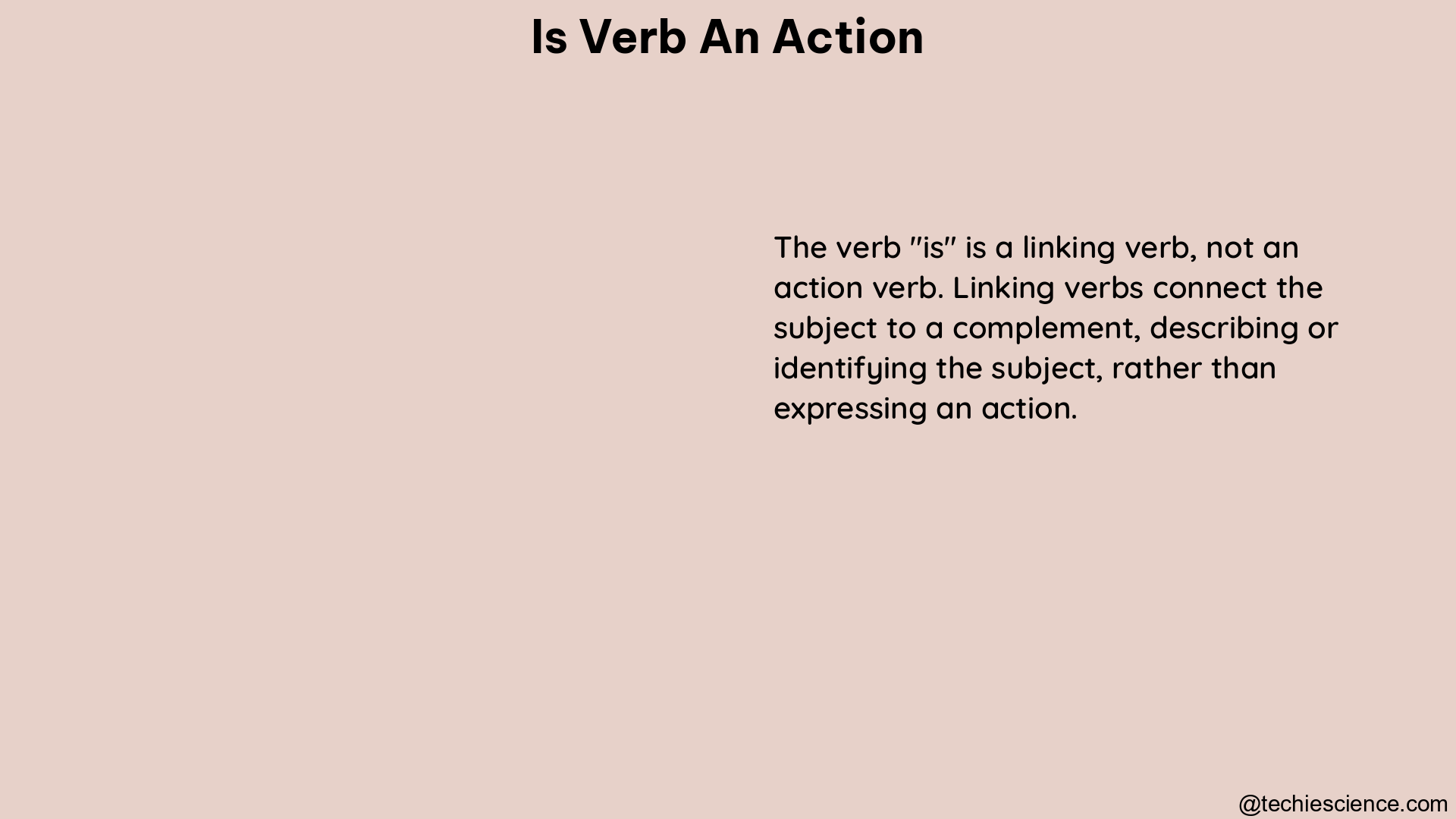Verbs are the backbone of any sentence, and they can be classified into two main categories: action verbs and linking verbs. Understanding the difference between these two types of verbs is crucial for effective communication and clear sentence structure. In this comprehensive guide, we will delve into the intricacies of action verbs and explore how they differ from linking verbs.
Action Verbs: Describing Physical and Mental Actions
An action verb is a verb that describes an action, either physical or mental, that the subject of the sentence performs. These verbs convey a sense of movement, activity, or a change in state. Examples of action verbs include:
- Run
- Eat
- Think
- Jump
- Kick
- Smile
Action verbs can be further classified into two subcategories: transitive and intransitive.
Transitive Action Verbs
Transitive action verbs require a direct object to complete the meaning of the sentence. In other words, the action performed by the subject is directed towards a specific object. For example:
- Greg is kicking the ball now. (The action verb is kicking, and the direct object is the ball.)
- He accepted my apology. (The action verb is accepted, and the direct object is my apology.)
Intransitive Action Verbs
Intransitive action verbs, on the other hand, do not require a direct object to complete the meaning of the sentence. The action performed by the subject is self-contained. For example:
- The wind blows constantly in Chicago. (The action verb is blows, and there is no direct object.)
- The children laughed and played in the park. (The action verbs are laughed and played, and there are no direct objects.)
Linking Verbs: Connecting Subjects to Information

Linking verbs, in contrast to action verbs, do not describe an action. Instead, they connect the subject of the sentence to information about that subject. Linking verbs do not express any action; they simply establish a relationship between the subject and the information that follows. Examples of linking verbs include:
- Is
- Are
- Was
- Were
- Become
- Seem
- Feel
- Look
- Sound
- Taste
Here are some examples of linking verbs in use:
- The ball is red. (The linking verb is connects the subject “ball” to the information that it is red.)
- The children are smart. (The linking verb are connects the subject “children” to the information that they are smart.)
- The child will be tall five years from now. (The linking verb will be connects the subject “child” to the information that she will be tall in the future.)
Determining Action Verbs vs. Linking Verbs
To determine whether a verb is an action verb or a linking verb, you can use the following technique:
- Substitute the verb with a form of the verb “to be” (e.g., “is,” “are,” “was”).
- If the sentence still makes sense, the verb is likely a linking verb.
- If the sentence does not make sense, the verb is likely an action verb.
Let’s apply this technique to some examples:
- The cake smells good. (Substituting “smells” with “is,” the sentence becomes “The cake is good,” which makes sense, so “smells” is a linking verb.)
- Ellen smells the cake. (Substituting “smells” with “is,” the sentence becomes “Ellen is the cake,” which does not make sense, so “smells” is an action verb.)
- The woman grew silent. (Substituting “grew” with “is,” the sentence becomes “The woman is silent,” which makes sense, so “grew” is a linking verb.)
- The gardener grew some flowers. (Substituting “grew” with “is,” the sentence becomes “The gardener is some flowers,” which does not make sense, so “grew” is an action verb.)
Verbs That Can Be Both Action and Linking
Some verbs can function as both action verbs and linking verbs, depending on the context of the sentence. These verbs are known as “dual-function” verbs. Let’s explore some examples:
Appear
- Jane appeared uninjured after the accident. (Linking verb, connecting “Jane” to the information that she appeared uninjured.)
- Before I could leave, Jane appeared. (Action verb, describing the action of Jane showing up.)
Smell
- The cake smells good. (Linking verb, connecting “cake” to the information that it smells good.)
- Ellen smells the cake. (Action verb, describing the action of Ellen smelling the cake.)
Grow
- The woman grew silent. (Linking verb, connecting “woman” to the information that she became silent.)
- The gardener grew some flowers. (Action verb, describing the action of the gardener growing flowers.)
In these examples, the same verb can be used as either an action verb or a linking verb, depending on the context and the function it serves in the sentence.
Conclusion
In summary, verbs can be classified as either action verbs or linking verbs based on their function in a sentence. Action verbs describe physical or mental actions performed by the subject, while linking verbs connect the subject to information about that subject. Understanding the difference between these two types of verbs is essential for effective communication and clear sentence structure. By mastering the distinction between action verbs and linking verbs, you can enhance your writing and speaking skills, ensuring that your message is conveyed with precision and clarity.
Reference:
-
Gallaudet University. (2024). Action Verbs and Linking Verbs – How to Use Verbs. Retrieved from https://gallaudet.edu/student-success/tutorial-center/english-center/grammar-and-vocabulary/how-to-use-verbs/action-verbs-and-linking-verbs/
-
Scribbr. (2023). Action Verbs | Definition, List & Examples. Retrieved from https://www.scribbr.com/verbs/action-verb/
-
St. Louis Community College. (n.d.). Active vs Linking Verbs. Retrieved from https://stlcc.edu/student-support/academic-success-and-tutoring/writing-center/writing-resources/active-vs-linking-verbs.aspx
Hey! I am Arpita Bose Roy. My qualifications are M.A. in English with B. Ed. in both general education and special education. I have 2 years of experience as a “language analyst” at IIT Kharagpur and 4 years of experience as an “Academic Content Developer” at IIT Kharagpur. Currently, I am working as an academic writer at Lambdageeks.